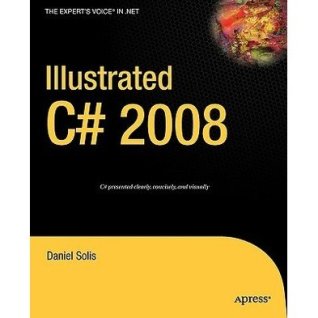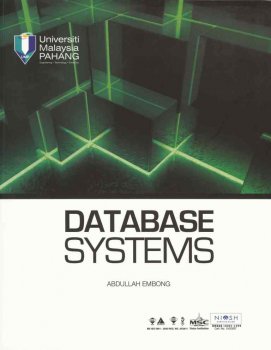
Previously , got this book from National Library this month…It’s a great book to read , especially people who take computer networking as their major or specialization… The book gives us the introduction and fundamentals of computer networking , how networking can be implemented in today’s business and life and the TCP/IP stack that can be implemented in today’s network design environment.
In a network application, end systems exchange messages with each other. Messages can contain anything the application designer wants. Messages may perform a control function (for example, the “Hi” messages in our handshaking example in Figure 1.2) or can contain data, such as an email message, a JPEG image, or an MP3 audio file. To send a message from a source end system to a destination end system, the source breaks long messages into smaller chunks of data known as packets. Between source and destination, each packet travels through communication links and packet switches (for which there are two predominant types, routers and linklayer switches). Packets are transmitted over each communication link at a rate equal to the full transmission rate of the link. So, if a source end system or a packet switch is sending a packet of L bits over a link with transmission rate R bits/sec, then the time to transmit the packet is L/R seconds.
In circuit-switched networks, the resources needed along a path (buffers, link
transmission rate) to provide for communication between the end systems are
reserved for the duration of the communication session between the end systems. In packet-switched networks, these resources are not reserved; a session’s messages use the resources on demand, and as a consequence, may have to wait (that is, queue) for access to a communication link. As a simple analogy, consider two restaurants, one that requires reservations and another that neither requires reservations nor accepts them. For the restaurant that requires reservations, we have to go through the hassle of calling before we leave home. But when we arrive at the restaurant we can, in principle, immediately be seated and order our meal. For the restaurant that does not require reservations, we don’t need to bother to reserve a table. But when we arrive at the restaurant, we may have to wait for a table before we can be seated.
A circuit in a link is implemented with either frequency-division multiplexing
(FDM) or time-division multiplexing (TDM). With FDM, the frequency spectrum
of a link is divided up among the connections established across the link.
Specifically, the link dedicates a frequency band to each connection for the
duration of the connection. In telephone networks, this frequency band typically has a width of 4 kHz (that is, 4,000 hertz or 4,000 cycles per second). The width of the band is called, not surprisingly, the bandwidth. FM radio stations also use FDM to share the frequency spectrum between 88 MHz and 108 MHz, with each station being allocated a specific frequency band. For a TDM link, time is divided into frames of fixed duration, and each frame is divided into a fixed number of time slots. When the network establishes a connection across a link, the network dedicates one time slot in every frame to this connection. These slots are dedicated for the sole use of that connection, with one time slot available for use (in every frame) to transmit the connection’s data.
The most complicated and interesting component of nodal delay is the queuing
delay, dqueue. In fact, queuing delay is so important and interesting in computer networking that thousands of papers and numerous books have been written about it [Bertsekas 1991; Daigle 1991; Kleinrock 1975, 1976; Ross 1995]. We give only a high-lev el, intuitive discussion of queuing delay here; the more curious reader may want to browse through some of the books (or even eventually write a PhD thesis on the subject!). Unlike the other three delays (namely, dproc, dtrans, and dprop), the queuing delay can vary from packet to packet. For example, if 10 packets arrive at an empty queue at the same time, the first packet transmitted will suffer no queuing delay, while the last packet transmitted will suffer a relatively large queuing delay (while it waits for the other nine packets to be transmitted). Therefore, when characterizing queuing delay, one typically uses statistical measures, such as average queuing delay, variance of queuing delay, and the probability that the queuing delay exceeds some specified value.
In Conclusion , this book is good to read and the chapters covered network security , wireless network , network management , multimedia networking , the link layer and the network layer. Some of the article above is an excerpt of the book Computer Networking – A Top Down Approach – Fifth Edition written by Kuros and Ross publish by Pearson.
Database System – A Practical Approach to Design , Implementation and Management

Hi there …back again. This time I want to present this book – Database Systems – A Practical Approach to Design , Implementation and Management. This book is a great book to read , gives us the understanding and introduction to database systems , the history of databases , SQL coding and implementation in SQL server , how to use microsoft access in implementing database using rows ,columns and tables , procedures to write SQL statements , how to add or delete a row , column or tables , how to use DBMS and RDBMS , data warehousing and data mining and lots more…
The overall description of the database is called the database schema. There are three different types of schema in the database and these are defined according to the levels of abstraction of the three-level architecture illustrated in Figure 2.1. At the highest level, we have multiple external schemas (also called subschemas) that correspond to different views of the data. At the conceptual level, we have the conceptual schema, which describes all the entities, attributes, and relationships together with integrity constraints. At the lowest level of abstraction we have the internal schema, which is a complete description of the internal model, containing the definitions of stored records, the methods of representation, the data fields, and the indexes and storage structures used. There is only one conceptual schema and one internal schema per database.
A major objective for the three-level architecture is to provide data independence, which means that upper levels are unaffected by changes to lower levels. There are two kinds of data independence: logical and physical.
Figure 2.2 Differences between the three levels. Changes to the conceptual schema, such as the addition or removal of new entities, attributes, or relationships, should be possible without having to change existing external schemas or having to rewrite application programs. Clearly, the users for
whom the changes have been made need to be aware of them, but what is important is that other users should not be.
Therefore, one of the main functions of the DBMS is to support a Data
Manipulation Language in which the user can construct statements that will cause such data manipulation to occur. Data manipulation applies to the external, conceptual, and internal levels. However, at the internal level we must define rather complex low-level procedures that allow efficient data access. In contrast, at higher levels, emphasis is placed on ease of use and effort is directed at providing efficient user interaction with the system.
A model is a representation of real-world objects and events, and their associations. It is an abstraction that concentrates on the essential, inherent aspects of an organization and ignores the accidental properties. A data model represents the organization itself. It should provide the basic concepts and notations that will allow database designers and end-users to communicate unambiguously and accurately their understanding of the organizational data. A data model can be thought of as comprising three components:
(1) a structural part, consisting of a set of rules according to which databases can be constructed;
(2) a manipulative part, defining the types of operation that are allowed on the data (this includes the operations that are used for updating or retrieving data from the database and for changing the structure of the database);
(3) a set of integrity constraints, which ensures that the data is accurate.
In a file-server environment, the processing is distributed about the network, typically a local area network (LAN). The file-server holds the files required by the applications and the DBMS. However, the applications and the DBMS run on each workstation, requesting files from the file-server when necessary, as illustrated in Figure 3.2. In this way, the file-server acts simply as a shared hard disk drive. The DBMS on each workstation sends requests to the file-server for all data that the DBMS requires that is stored on disk. This approach can generate a significant amount of network traffic, which can lead to performance problems. For example, consider a user request that requires the names of staff who work in the branch at 163 Main St. We can express this request in SQL (see Chapter 6) as:
SELECT fName, IName
FROM Branch b, Staff s
WHERE b.branchNo = s.branchNo AND b.street = ‘163 Main St’;
As the file-server has no knowledge of SQL, the DBMS must request the files corresponding to the Branch and Staff relations from the file-server, rather than just the staff names that satisfy the query.
The file-server architecture, therefore, has three main disadvantages:
(1) There is a large amount of network traffic.
(2) A full copy of the DBMS is required on each workstation.
(3) Concurrency, recovery, and integrity control are more complex, because there
can be multiple DBMSs accessing the same files.
As stated earlier, there are no duplicate tuples within a relation. Therefore, we need to be able to identify one or more attributes (called relational keys) that uniquely identifies each tuple in a relation. In this section, we explain the terminology used for relational keys. Superkey An attribute, or set of attributes, that uniquely identifies a tuple within a relation. A superkey uniquely identifies each tuple within a relation. However, a superkey may contain additional attributes that are not necessary for unique identification, and we are interested in identifying superkeys that contain only the minimum number of attributes necessary for unique identification. Candidate key – A superkey such that no proper subset is a superkey within the relation.
A candidate key K for a relation R has two properties:
• Uniqueness. In each tuple of R, the values of K uniquely identify that tuple.
• Irreducibility. No proper subset of K has the uniqueness property.
Lastly , this books elaborate and explain in details about database manipulation , database architecture , and object DBMS. The content of this book is quite large to read , explore and understand , but it’s quite a good reference for a database systems book. Some of the article is an excerpt from the book Database Systems – A Practical Approach to Design , Implementation and Management – written by Thomas Connoly and Carolyn Begg.























